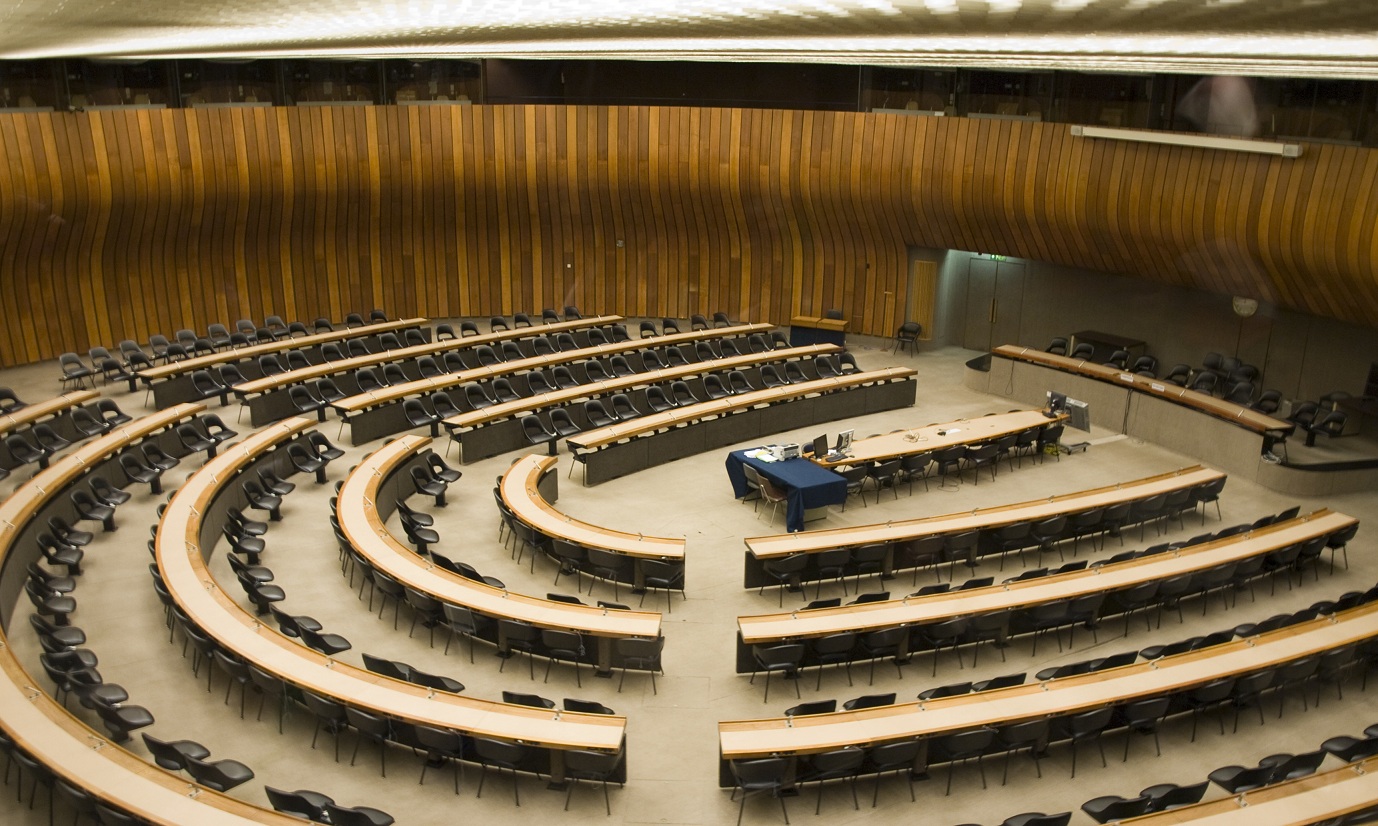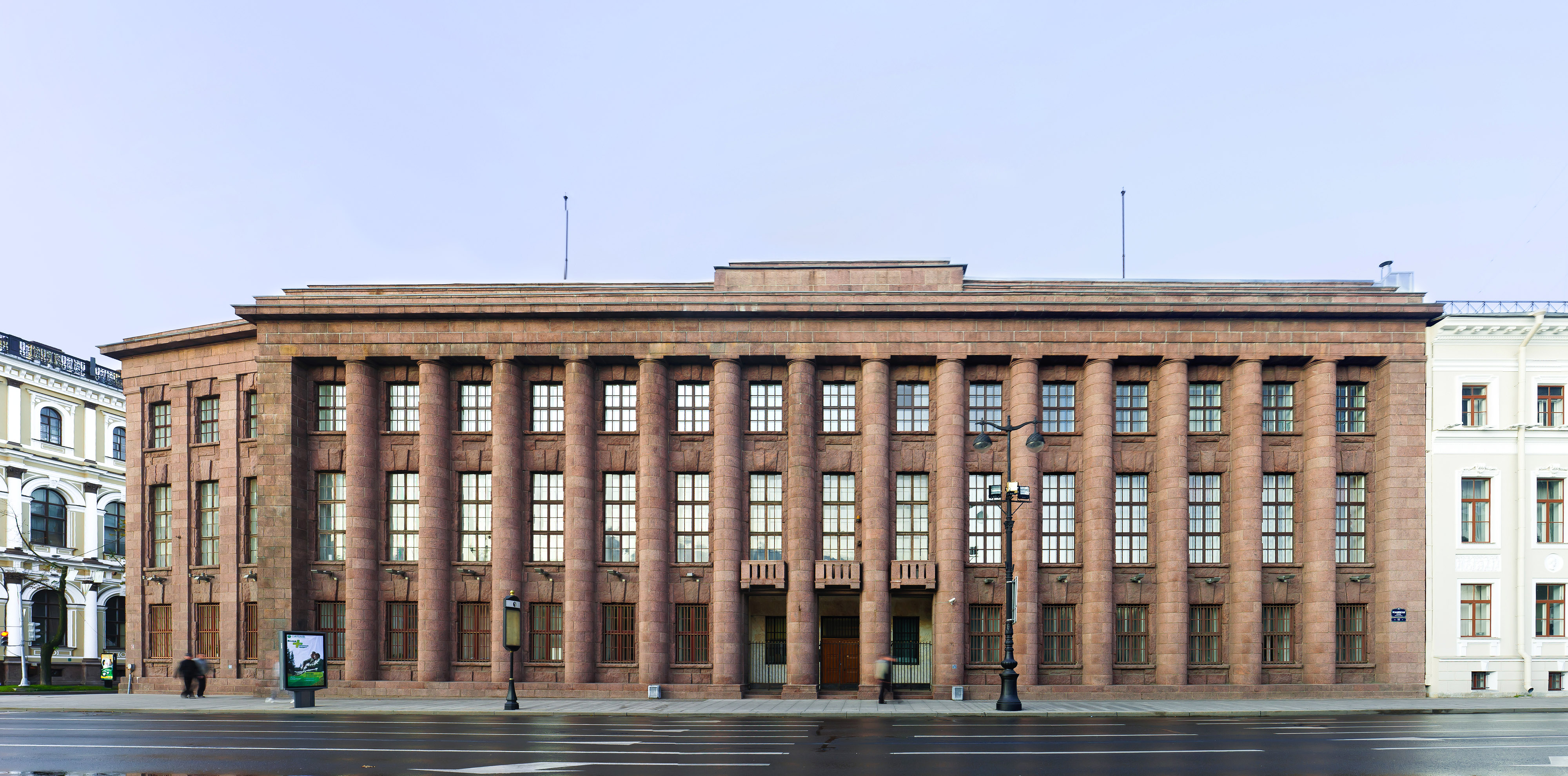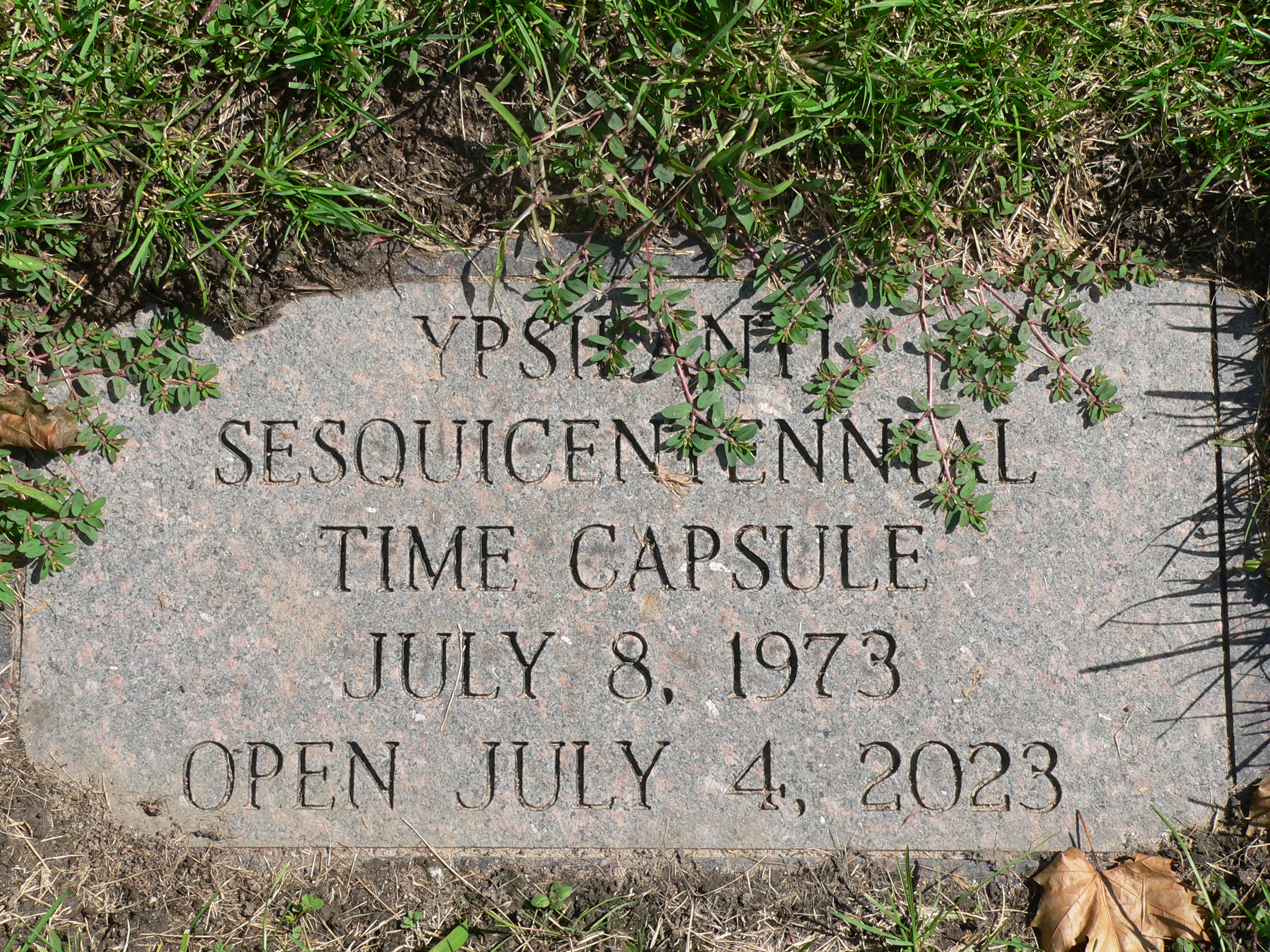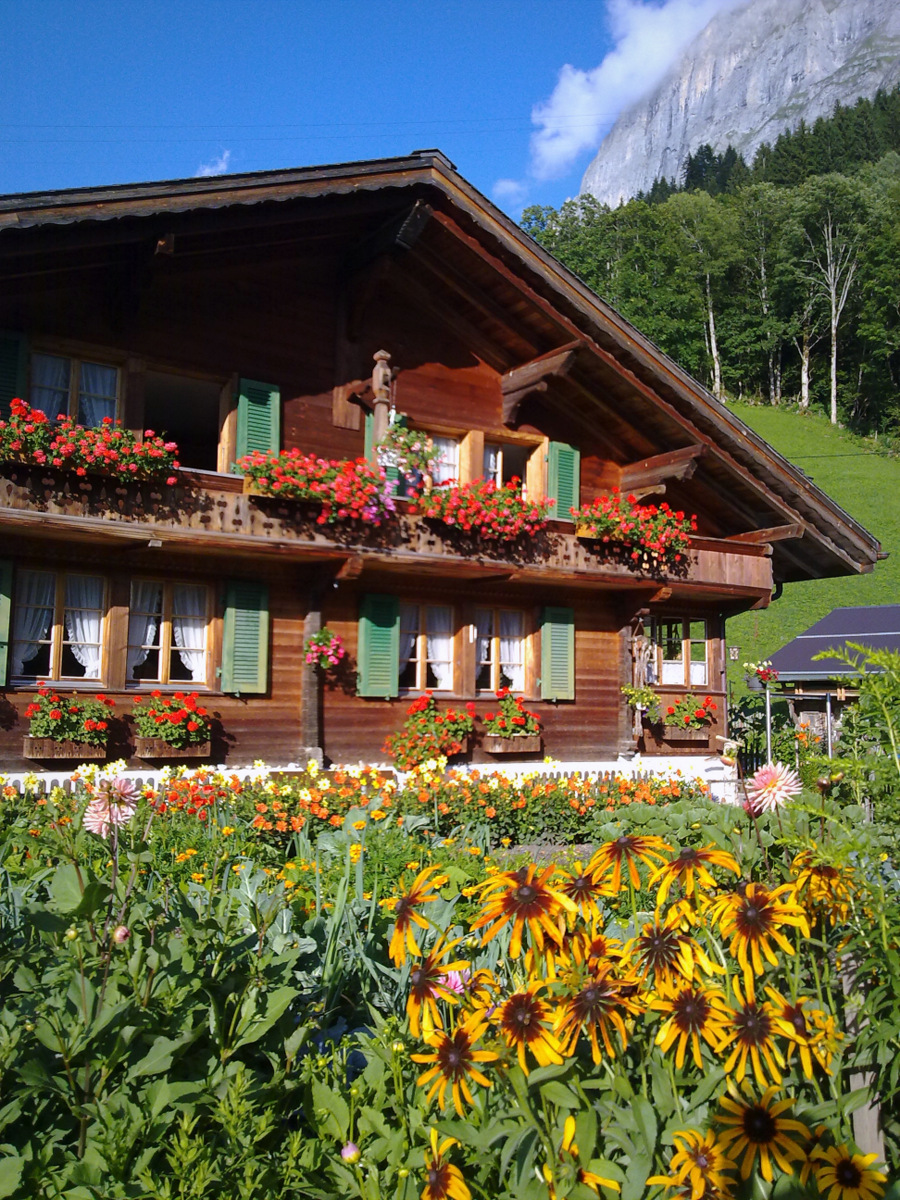|
Palace Of Nations
The Palace of Nations (french: Palais des Nations, ) is the home of the United Nations Office at Geneva, located in Geneva, Switzerland. It was built between 1929 and 1938 to serve as the headquarters of the League of Nations. It has served as the home of the United Nations Office at Geneva since 1946 when the Secretary-General of the United Nations signed a Headquarters Agreement with the Swiss authorities, although Switzerland did not become a member of the United Nations until 2002. In 2012 alone, the Palace of Nations hosted more than 10,000 intergovernmental meetings. History Project and construction An architectural competition held in the 1920s to choose a design for the complex described the project as follows: The Palace, whose construction is the object of the competition, is intended to house all the organs of the League of Nations in Geneva. It should be designed in such a way as to allow these organs to work, to preside and to hold discussions, independently an ... [...More Info...] [...Related Items...] OR: [Wikipedia] [Google] [Baidu] |
Stripped Classicism
Stripped Classicism (or "Starved Classicism" or "Grecian Moderne") Jstor is primarily a 20th-century classicist architectural style stripped of most or all ornamentation, frequently employed by governments while designing official buildings. It was adapted by both totalitarian and democratic regimes. The style embraces a "simplified but recognizable" classicism in its overall massing and scale while eliminating traditional decorative detailing. The orders of architecture are only hinted at or are indirectly implicated in the form and structure. Despite its etymological similarity, Stripped Classicism is sometimes distinguished from "Starved Classicism", the latter "displaying little feeling for rules, proportions, details, and finesse, and lacking all verve and élan". At other times the terms "stripped" and "starved" are used interchangeably. Stripped Classicism was a materialistic manifestation of 'political' modernism. Recent historiography has explicitly linked this ar ... [...More Info...] [...Related Items...] OR: [Wikipedia] [Google] [Baidu] |
Celestial Sphere Woodrow Wilson Memorial
The grounds of the Palais des Nations (seat of the United Nations Office at Geneva) contain many fine objects donated by member states of the United Nations, private sponsors and artists. The ''Celestial Sphere'' (also known as the ''Armillary Sphere'') in the Ariana Park of the Palais des Nations is the best-known of these. The huge - over four meter diameter - ''Celestial Sphere'' is the chef d'oeuvre of the American sculptor Paul Manship (1885–1966). It was donated in 1939 by the Woodrow Wilson Foundation to what was then the League of Nations building. Known also as the ''Woodrow Wilson Memorial Sphere'' of the Palais des Nations it is today a symbol of Geneva International and of Geneva as the centre of dialogue and peace. History Contacted in late 1935 by the Board of the Woodrow Wilson Foundation, Manship was asked to provide an idea for a memorial to President of the United States Woodrow Wilson as the founding father of the League of Nations. At that time the P ... [...More Info...] [...Related Items...] OR: [Wikipedia] [Google] [Baidu] |
French Alps
The French Alps are the portions of the Alps mountain range that stand within France, located in the Auvergne-Rhône-Alpes and Provence-Alpes-Côte d'Azur regions. While some of the ranges of the French Alps are entirely in France, others, such as the Mont Blanc massif, are shared with Switzerland and Italy. At , Mont Blanc (Italian: ''Monte Bianco''), on the France–Italy border, is the highest mountain in the Alps, and the highest Western European mountain. Notable towns in the French Alps include Grenoble, Chamonix, Annecy, Chambéry, Évian-les-Bains and Albertville. Ranges and summits Ski areas The largest connected ski areas are: # Les Trois Vallées ( Courchevel, Méribel, La Tania, Brides-les-Bains, Saint-Martin-de-Belleville, Les Menuires, Val Thorens and Orelle): 338 slopes, 600 km of pistes. # Portes du Soleil (Avoriaz, Châtel, Morzine, Les Gets, Saint-Jean d'Aulps, La Chapelle d'Abondance, Abondance, Montriond, Swiss resorts): 288 slope ... [...More Info...] [...Related Items...] OR: [Wikipedia] [Google] [Baidu] |
Lake Geneva
, image = Lake Geneva by Sentinel-2.jpg , caption = Satellite image , image_bathymetry = , caption_bathymetry = , location = Switzerland, France , coords = , lake_type = Glacial lake , inflow = Rhône, Dranse , outflow = Rhône , catchment = , basin_countries = Switzerland, France , length = , width = , area = , depth = , max-depth = , volume = , residence_time = 11.4 years , shore = , elevation = , islands = Île de Peilz, Château de Chillon, Île de Salagnon, Île de la Harpe, Île Rousseau, Île de Choisi , cities = Geneva (CH), Lausanne (CH), Évian (F), Montreux (CH), Thonon (F), Vevey (CH) (''see list'') , pushpin_map=France Rhône-Alpes#Canton of Vaud#Canton of Valais#Switzerland#France#Alps , pushpin_label_position= bottom , ... [...More Info...] [...Related Items...] OR: [Wikipedia] [Google] [Baidu] |
Jura Mountains
The Jura Mountains ( , , , ; french: Massif du Jura; german: Juragebirge; it, Massiccio del Giura, rm, Montagnas da Jura) are a sub-alpine mountain range a short distance north of the Western Alps and mainly demarcate a long part of the French–Swiss border. While the Jura range proper (" folded Jura", ''Faltenjura'') is located in France and Switzerland, the range continues as the Table Jura ("not folded Jura", ''Tafeljura'') northeastwards through northern Switzerland and Germany. Name The mountain range gives its name to the French department of Jura, the Swiss Canton of Jura, the Jurassic period of the geologic timescale, and the Montes Jura of the Moon. It is first attested as ''mons Iura'' in book one of Julius Caesar's ''Commentarii de Bello Gallico''. Strabo uses a Greek masculine form ''ὁ Ἰόρας'' ("through the Jura mountains", ''διὰ τοῦ Ἰόρα ὄρους'') in his ''Geographica'' (4.6.11). Based on suggestions by Ferdinand de Saussure, ea ... [...More Info...] [...Related Items...] OR: [Wikipedia] [Google] [Baidu] |
Covenant Of The League Of Nations
The Covenant of the League of Nations was the charter of the League of Nations. It was signed on 28 June 1919 as Part I of the Treaty of Versailles, and became effective together with the rest of the Treaty on 10 January 1920. Creation Early drafts for a possible League of Nations began even before the end of the First World War. The London-based Bryce Group made proposals adopted by the British League of Nations Society, founded in 1915. Another group in the United States—which included Hamilton Holt and William B. Howland at the Century Association in New York City—had their own plan. This plan was largely supported by the League to Enforce Peace, an organization led by former U.S. President William Howard Taft. In December 1916, Lord Robert Cecil suggested that an official committee be set up to draft a covenant for a future league. The British committee was finally appointed in February 1918; it was led by Walter Phillimore (and became known as the Phillimore Commit ... [...More Info...] [...Related Items...] OR: [Wikipedia] [Google] [Baidu] |
Time Capsule
A time capsule is a historic cache of goods or information, usually intended as a deliberate method of communication with future people, and to help future archaeologists, anthropologists, or historians. The preservation of holy relics dates back for millennia, but the practice of preparing and preserving a collection of everyday artifacts and messages to the future appears to be a more recent practice. Time capsules are sometimes created and buried during celebrations such as a world's fair, a cornerstone laying for a building, or at other ceremonies. History Early examples It is widely debated when time capsules were first used, but the concept is fairly simple, and the idea and first use of time capsules could be much older than is currently documented. The term "time capsule" appears to be a relatively recent coinage dating from 1938. Around 1761, some dated artifacts were placed inside the hollow copper grasshopper weathervane, itself dating from 1742, atop historic ... [...More Info...] [...Related Items...] OR: [Wikipedia] [Google] [Baidu] |
Chalet
A chalet (pronounced in British English; in American English usually ), also called Swiss chalet, is a type of building or house, typical of the Alpine region in Europe. It is made of wood, with a heavy, gently sloping roof and wide, well-supported eaves set at right angles to the front of the house. Definition and origin The term ''chalet'' comes from the Arpitan-speaking part of Switzerland and the French Savoy region, and originally referred to the hut of a herder. It was often embedded in the ground for the sake of temperature buffering. Many chalets in the European Alps were originally used as seasonal farms for dairy cattle, which would be brought up from the lowland pastures during the summer months. The herders would live in the chalet and make butter and cheese in order to preserve the milk produced. These products would then be taken, with the cattle, back to the low valleys before the onset of the alpine winter. The chalets would remain locked and unused during th ... [...More Info...] [...Related Items...] OR: [Wikipedia] [Google] [Baidu] |
Sculpture Flag Onu Geneve
Sculpture is the branch of the visual arts that operates in three dimensions. Sculpture is the three-dimensional art work which is physically presented in the dimensions of height, width and depth. It is one of the plastic arts. Durable sculptural processes originally used carving (the removal of material) and modelling (the addition of material, as clay), in stone, metal, ceramics, wood and other materials but, since Modernism, there has been an almost complete freedom of materials and process. A wide variety of materials may be worked by removal such as carving, assembled by welding or modelling, or moulded or cast. Sculpture in stone survives far better than works of art in perishable materials, and often represents the majority of the surviving works (other than pottery) from ancient cultures, though conversely traditions of sculpture in wood may have vanished almost entirely. However, most ancient sculpture was brightly painted, and this has been lost. [...More Info...] [...Related Items...] OR: [Wikipedia] [Google] [Baidu] |
United Nations Headquarters In New York
zh, 联合国总部大楼french: Siège des Nations uniesrussian: Штаб-квартира Организации Объединённых Наций es, Sede de las Naciones Unidas , image = Midtown Manhattan Skyline 004.jpg , image_size = 400px , caption = Viewed across the East River from Roosevelt Island in 2021; from left to right: the Secretariat, Conference, and General Assembly buildings. In the background (from left to right) are the Empire State Building, the Chrysler Building, One Vanderbilt, and other skyscrapers. , location = , address = 760 United Nations Plaza,Manhattan, New York City, New York ( 10017-6818),United States , coordinates = , start_date = , completion_date = , inauguration_date = , architect = Board of designers mediated by Harrison & Abramovitz , owner = United Nations , cost = $65 million ($ adjusted for inflation) , floor_count = 39 ... [...More Info...] [...Related Items...] OR: [Wikipedia] [Google] [Baidu] |
United Nations General Assembly
The United Nations General Assembly (UNGA or GA; french: link=no, Assemblée générale, AG) is one of the six principal organs of the United Nations (UN), serving as the main deliberative, policymaking, and representative organ of the UN. Currently in its 77th session, its powers, composition, functions, and procedures are set out in Chapter IV of the United Nations Charter. The UNGA is responsible for the UN budget, appointing the non-permanent members to the Security Council, appointing the UN secretary-general, receiving reports from other parts of the UN system, and making recommendations through resolutions. It also establishes numerous subsidiary organs to advance or assist in its broad mandate. The UNGA is the only UN organ wherein all member states have equal representation. The General Assembly meets under its president or the UN secretary-general in annual sessions at the General Assembly Building, within the UN headquarters in New York City. The main part of ... [...More Info...] [...Related Items...] OR: [Wikipedia] [Google] [Baidu] |








_crop.png)
